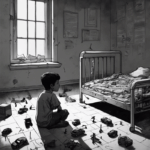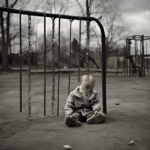Tragic Death of Young Boy in State Custody Highlights Systemic Failures 😢⚖️
The death of a boy in state custody—found alone in a hot car—has shaken a community, raising alarm over the systemic failures within child protection services. What circumstances could lead to such a preventable tragedy? As details unfold, this shocking incident not only questions the accountability of those in charge but also reflects broader failures in safeguarding vulnerable lives.
In a cruel twist of irony reminiscent of a tragic fable, an innocent child, designated to be safe, met a fate most feared. The irony sits heavy; a system designed to protect him ultimately placed him in harm’s way, as the sun blazed mercilessly over the parked car. His passing is not merely an incident; it embodies a critical reflection on the very nature of guardianship in state care.
The Circumstances of Tragedy
Initial reports sketch a dire scenario. The boy was reportedly left inside a vehicle for hours, languishing in conditions akin to an oven—conditions that would make any adult shudder. Authorities arrested a woman, allegedly charged with caregiving duties, for leaving the child unattended, but the questions hang thick in the air: how was this even permitted?
The barriers of communication between guardians, social services, and law enforcement—like fences of razor wire—seemingly failed to provide the necessary oversight. Cases like these raise an uncomfortable question: how many more children are slipping through the cracks, victims of an overburdened system struggling to meet its fundamental obligations?
A System of Contrasts: Protections and Failures
Much like the sun and the shade, the child welfare system promises protection while sometimes delivering neglect. According to the National Child Abuse and Neglect Data System, thousands of children fall under the jurisdiction of state guardians each year, yet many remain invisible to the very structures designed to support them. The contrast between the aspirations of child welfare policies and the grim realities of execution is stark.
- Accountability: When a child dies in custody, who bears the brunt of accountability? Should it solely reside with individual caretakers, or does the entire system’s architecture share the weight?
- Policy Gaps: Are enough resources allocated to thoroughly supervise and investigate cases? The overwhelming workload on social workers can lead to disastrous oversights, where case files become more of a formality than a lifeline.
- Community Awareness: How often do communities engage with and understand the child protection agencies? Knowledge gaps can hinder advocacy and systemic improvements.
Data-Driven Insights
Statistics illuminating the precarious nature of state custody reveal alarming trends. According to the Child Welfare League of America, children in state care are 10 times more likely to face neglect and abuse compared to their peers. Such data serves as a chilling reminder of the vulnerabilities these children face daily.
Aftermath: The Charge of Justice
As the nation grapples with the heart-wrenching loss of this young life, mass speculation brews. The woman charged faces severe repercussions, but is punishment enough to amend a broken system? Does justice truly equate with penal action, or does it require a holistic overhaul to prevent future tragedies?
Community advocates argue for legislative reforms, pushing for systems that promote transparency and ensure that no child can ever fall victim to such a fate again. Proposals include increasing funding for social services, mandatory training for caregivers, and implementing new technologies for monitoring the well-being of children in custody. The idea is not merely to introduce new rules but to crystallize a commitment to safety and nurture.
A Call to Action
Ultimately, this tragic case serves as a desperate call to action, urging stakeholders from policymakers to average citizens to not merely mourn, but to mobilize. How can we, as a society, hold ourselves accountable for the lives entrusted to our care? What measures can we take in our communities to advocate for vulnerable children? The boy’s death resonates as a beacon of change, igniting discussions urgently needed in our contemporary social landscape.
As the dust settles, the thirst for justice will linger, but the opportunity for reform is ripe for the taking. In a world so often overshadowed by indifference, let us strive to illuminate the path forward, to ensure that no child suffers alone in a hot car again. 🚗💔










